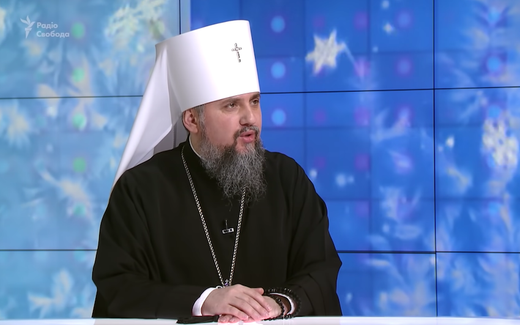How Stalin robbed the Russians of Christmas, and how he gave it back

Stalin took the "Christmas atmosphere" to New Year's Eve. Nothing changed, and at the same time: that changed everything. Photo AFP, Dimitar Dilkoff
Eastern Europe
Less than a century ago, Soviet dictator Joseph Stalin outlawed Christmas. Russians could be sent to Gulag in Siberia for erecting an illegal Christmas tree. The celebration has never been the same in Russia since.
Winter turns the Red Square in the Moscow city centre into one of the biggest winter fairs in Russia. One can buy almost anything on the Red Square to be ready for Russia's harsh winter: the furry hats called ushanka, and the wool boots called valenki have kept Russians warm throughout centuries.
But one can also enjoy pancakes, pies, honey, and other traditional Russian food while enjoying the view of the ancient and nostalgic Kremlin buildings, the orthodox St. Basil's Cathedral, and the world-famous Mausoleum where the first Soviet leader Vladimir Lenin is still displayed for the public.
Interestingly enough, Russians do not associate the atmosphere, the lights, the decorated trees, and the fair with Christmas. In Russian, it is called a New Year's Festival. The lights are called New Year's decoration, and the tree (yolka) is a New Year's Tree. Even presents for friends and family are only given on the night of the 31st. But why?
Yolka
Well, it all started with the Russian Revolution. When communist dictator Joseph Stalin, a fervent atheist, became the leader of the Soviet Union, he decided to outlaw Christmas. In Soviet ideology, there was no place for religion, so there was no space to celebrate Jesus' birth. From 1929 onward, a period began in Soviet Russia without Christmas.
Ruling out Christmas was not an easy task. The Russians were steeped in religion and banning it from society was almost impossible. Every year, around the 7th of January (the conservative Russian Orthodox Church still celebrates Christmas according to the Julian Calendar), dozens of priests would be arrested for stubbornly continuing Christmas Church services.
The religious and poor Soviet citizens did not give up so fast and would in secret cut down their own yolka's in the forests and decorate it with anything they could find: Painted eggshells, shiny candy wraps and even little matchboxes. There, on Christmas Eve, they would read the story of the birth of Christ.
New Year
One Soviet government official, Pavel Postishev, tried to change Stalin's mind. In 1935 he placed an article in the Soviet newspaper Pravda, saying: "In the age before the Great Revolution, the bourgeoisie and the capitalists always erected a tree for their children on New Year's Eve. Children of the working class would jealously look through the frozen windows at the sight of the shiny tree, decorated with lights while the rich kids played under it with the new toys they got".

According to Postishev, it was time that the working class of the Soviet Union would all get a New Year's tree. Stalin agreed, partially. The atmosphere he gave back, but without Christ, for New Year. He even imitated the Western Santa Claus with the Russian version 'Ded Moroz' or 'Grandfather Frost' and his granddaughter 'Snegurochka'. So, from 1935 onwards, the Russians erected trees on the 31st of December to celebrate New Year, and of course, they put a shiny red Soviet star on top of it.
That way, the old way of celebrating Christmas was wholly forgotten when Gorbachev started his perestroika reforms. For more than fifty years, Soviet citizens celebrated New Year's Eve the way the West celebrates Christmas on the 24th and 25th of December. Today, most Russians won't even know that Stalin robbed them of the 'real' Christmas and gave them New Year's Eve instead.
Christmas
The Soviet Union has been gone for thirty years now, and capitalism is back in Russia. American influences like 'black Friday', winter festivals and other marketing tricks have flooded Russia. Also, religion is back, and the Russian Orthodox Church came back stronger as ever. On the 7th of January, the churches are full for the Russian Christmas according to the Julian calendar.
But one thing hasn't changed. Russians still give each other presents on New Year's Eve, the tree still stands foremost for New Year's celebrations, and the Western Christmas atmosphere is only felt on Russia's New Year's Eve. Just like his Soviet predecessors, Russia's President Vladimir Putin makes a televised speech on New Year's Eve from the nostalgic towers of the Kremlin, speaking about the good hopes for the New Year and Russians love him for that.
The Church is doing all it can to fight back, though. Many orthodox churches erect Christmas trees and decorate them with angels, trumpets, baby Jesus and the six-pointed star of Bethlehem. Big churches in the cities of Moscow and Saint-Petersburg televise their services, and important political figures, including President Vladimir Putin, attend the orthodox Christmas celebrations. That, too, is a way for the Russian President to make himself popular. Christmas is back in Russia.




